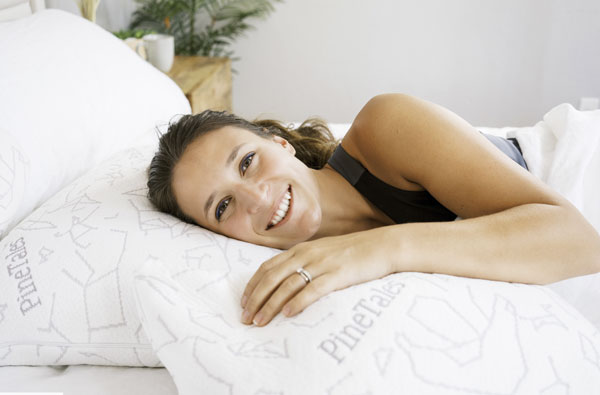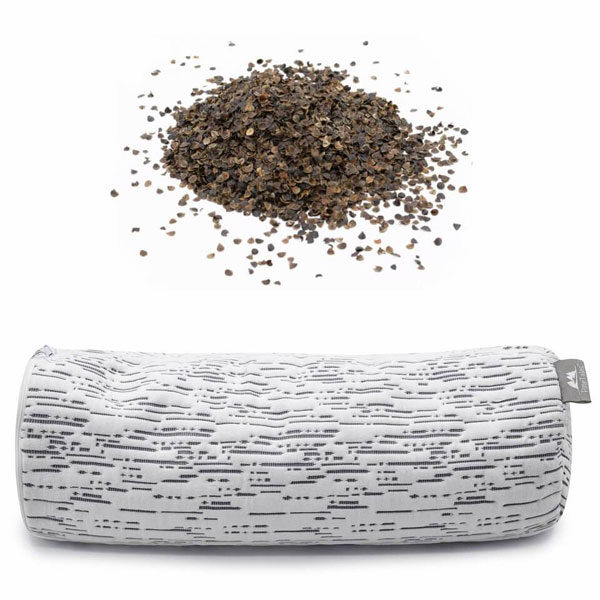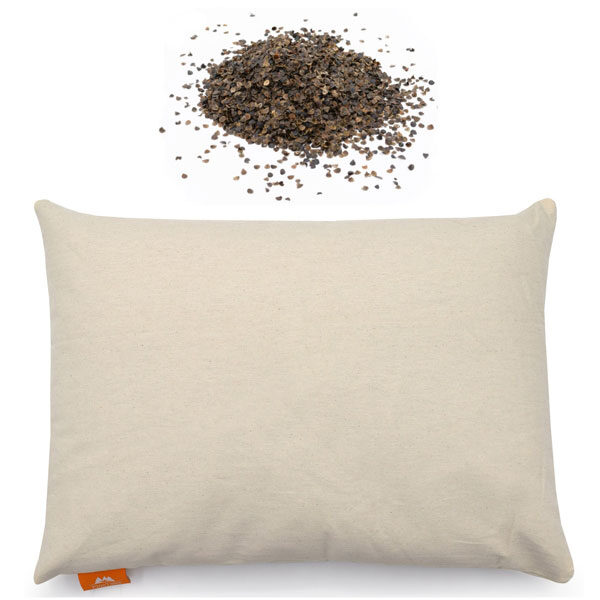5 tips to optimize your bedroom for sleep using a Sobakawa pillow
Getting a good night’s sleep is essential to human health. For one, having good quality sleep allows individuals to maintain healthy biological processes. Inversely, constant sleeplessness shortens a person’s lifespan and is responsible for increasing the chances of developing severe health ailments, such as diabetes and cardiovascular diseases. (1)
Multiple causes trigger sleep deprivation, including specific health problems, stress, and an uncomfortable sleeping environment, among other topics. If you’re one of the many who wish to have a night of better sleep, you’ve come to the right place.
In this article, you’ll discover how to optimize your bedroom using a Sobakawa pillow and other sleeping aids to facilitate a deep slumber. But first, let’s understand how the world approaches this crucial biological need.
The world’s view on sleeping issues
In 2019, electronics giant Philips commissioned KJT Group to conduct a study in 12 countries worldwide to find out more about sleep perceptions and behaviors. One of the significant findings is that only 10% of adults admitted they slept well, while 62% said they were having problems dozing off. (2)
When it comes to contributing factors to sleeplessness, the respondents identified insomnia and snoring as the top causes. Shift work sleep disorder, chronic pain, and sleep apnea complete the list. Some 24% of those surveyed, however, said they have no health conditions that impact sleeplessness. As a result of sleep deprivation, six in 10 adults said they experience daytime sleepiness. (2)
Individuals who don’t get enough sleep due to specific health conditions must recognize that they need help to alleviate their condition. Additionally, those who can’t provide particular reasons for sleeplessness may need to revisit their sleeping environment and make some changes to fall asleep faster.
How does a pillow impact sleep quality?
Health conditions aside, getting extended sleeping hours relies heavily on sleeping aids, such as mattresses, pillows, and sheets. As your body’s first point of contact, your pillow must make you feel comfortable and relaxed.
There’s no scientific recommendation as to the ‘best’ pillows and mattresses on the market. However, a study has indicated that the human body’s reaction to the sleeping surface may either help improve or worsen sleep quality. The said research has found that participants who reported low sleep quality also claimed to have experienced poor pillow comfort. In addition, insufficient sleep quality was linked with cervical or neck stiffness and shoulder pain upon waking up.
The same study also found out that users of feather pillows reported the least rates of comfort and sleep quality. In this regard, an individual’s choice of the ideal pillow, which provides comfort and eases both pain and soreness, is key to high-quality sleep. (6)
Know what to look for in a pillow
Knowing the basic characteristics of a pillow is essential in making the right choice. Looking at the following elements will help you find the right one:
- Firmness: A firm cushion allows your head to stay in place without getting uncomfortable.
- Loft: This term describes a pillow’s height or thickness.
- Special pillows: They’re made to address an individual’s unique needs. Neck or cervical pillows, cooling pillows, and orthopedic pillows are a few examples of these non-traditional sleeping aids.
- Pillow fillers: The materials stuffed inside the pillow affects firmness and loft. Foam, fiber, feather, or water are typically placed inside these sleeping accessories. Until recently, however, manufacturers have expanded the choices to include non-traditional fillings, such as horsehair and hemp.
The features discussed above are what make a pillow unique from each other, and these traits can be adjusted to suit individual preferences.
Sobakawa pillows to optimize your bedroom
Pillows come in diverse shapes, sizes, and fillings. One of the more non-traditional fillers on the market today is the buckwheat pillow, otherwise known as the Sobakawa pillow.
Sobakawa pillows are traditional Japanese sleeping accessories more popularly known as buckwheat pillows. Buckwheat is a type of herbaceous plant that grows in European and Asian countries, which can be consumed by both humans and animals.
While there’s a lack of scientific proof about the benefits of alternative pillow fillers in general, anecdotal evidence seems to show that buckwheat pillows may help promote better sleep.
Discover how Sobakawa pillows help you sleep better
A well-rested person performs well during the day. Inversely, an individual who suffers from sleep deprivation will feel sluggish and may have cognitive impairments that negatively impact work productivity and personal relationships. (7)
- Has plenty of benefits
Using Sobakawa pillows provide numerous benefits that may help address sleep challenges. With this sleeping accessory, you’ll be able to enjoy the following benefits:
- Provide proper support: Both your pillow and mattress must provide comfort and support your body’s natural spine curvature, head, and neck. Regardless of your sleeping preference, choose sleeping tools that can help absorb excessive pressure on your whole body, including muscles and joints.
- Fortunately, Sobakawa hulls can be adjusted based on your preference, allowing you to achieve a neutral position on the bed. This, in turn, helps ease pain and helps provide uninterrupted sleep.
- Help ease body pain: Buckwheat hulls are unique in that while staying firm, they can also move to contour specifically to your body shape. As such, Sobakawa pillows won’t exert pressure against your body, helping prevent aches and pains associated when your bones, muscles, and tissues are strained during sleep.
- Sobakawa pillows are cool: Body heat escapes through the head, and this is especially true while your head is resting on the pillow. Unfortunately, being too hot impacts sleep quality. According to health experts, the most conducive temperature is about 65° Fahrenheit (18.3° Celsius) to get a good night’s sleep. Conveniently, Sobakawa pillows are breathable and allow air to circulate, keeping your head cool. (8)
- Improve the sleep experience: Apart from helping ease pain and discomfort while you’re sleeping, Sobakawa pillows are also resistant to dust and allergens. This way, you won’t have to contend with asthma attacks while using them. In addition, they’re also non-toxic, unlike other synthetic pillow fillings.
- Cost-effective: While a Sobakawa pillow may cost three times more than regular foam pillows, the fact is, you’ll also get more life out of it. Standard sleeping aids typically last up to one year, while these organic accessories can last for a decade. What’s more, hulls are easily replaceable once they become less firm or lose their shape.
2. Use head pillows
The hulls used in a Sobakawa pillow go through minimal processing to preserve their natural shape. When joined together and placed inside a pad, they provide exceptional support as they mold to the shape of your head and neck, providing multiple benefits discussed earlier.
If you’re curious to know more about buckwheat or Sobakawa pillows, check out this video: https://www.youtube.com/watch?v=tAORufo9Kq0.
3. Get a Sobakawa neck pillow
In addition to cradling the head, a pillow should provide adequate support to your neck, too. A cushion with an appropriate height can help reduce cervical spine stress. It also eases muscle strain on your neck and shoulder, relieving pain and preventing discomfort in your sleep. (9)
One of the ways to ensure proper neck support is to use a Sobakawa neck roll pillow. Also known as a cervical pillow, this sleeping accessory is placed inside the pillowcase, on top of the pad you use on your head. This provides the much-needed support for back or side sleepers.
4. Adjust Sobakawa pillows based on your sleeping position
Improper sleeping and waking positions could impose undue pressure and strain on your body, causing pain in your neck, shoulder, and back muscles. Hence, the ideal type of pillow must support proper body alignment whether you sleep on your back, side, or stomach. (5) (10)
Since a user can adjust the volume of Sobakawa hulls based on preference, consider either filling it up or reducing the hulls to get the proper firmness and loft you need. You can align your head to your neck, back, and shoulders using this guide:
- For back sleeper: For back sleepers, thinner pillows with a slightly thicker bottom could be perfect to better support your neck, head, and shoulders. Additionally, a small pillow tucked under the back of your knees will prevent straining your spine and help support the natural curve in your lower back. (4) (5) (10)
- For those who sleep on their stomach: Sleeping on your stomach creates back stress because your spine is forced into an awkward position. It’s also the most straining position on both your neck and spine. Use a very soft or thin pillow on your head and a flat one under your belly and pelvis to support your back. (4) (5)
- For side sleepers: Unlike back sleepers, individuals who sleep on their sides need thicker pillows to fill the gap between the ear and shoulder. A firm pillow tucked in the knees helps prevent the upper leg from disrupting spine alignment, easing undue stress on the lower back and hips. Consider placing a small pillow under the waist and avoid twisting your body at the waist. The goal should be to keep your spine straight. (4) (5) (10)
- For combination sleepers: If you’re a combination sleeper, having one pillow isn’t enough to fulfill your needs. Either you get a low-loft for sleeping on your stomach and back, or switch to a high-loft pillow as a side sleeper. Getting yourself a buckwheat or Sobakawa pillow gives you the best of both worlds. (10)
5. Use Sobakawa hulls to fill your special pillows
Apart from head and neck pillows, the buckwheat hulls can be placed in any unique pillow you’re keeping with you.
- Pregnancy body pillows: Pregnant women typically sleep on their sides to ease pressure on their backs. The truth is, this position also facilitates more blood and nutrients for the baby. To further prevent strains, place buckwheat hulls in your pregnancy pillow to help ease extra pressure. (4)
- Travel pillows: If you’re a frequent traveler, you likely have a U-shaped travel neck pillow with you. Consider replacing its foam fillers with buckwheat hulls to experience better neck support whether you’re on travel or in the bedroom.
- Cool or warm pillow: Turn your temperature pillow into a Sobakawa pillow. Place the hulls in the freezer or pop them in the oven for a few seconds to warm a sleeping accessory. Place the hulls inside this unique pillow and enjoy.
Additional tips to optimize your bedroom for sleeping
As mentioned, having the right sleeping tools like mattresses, pillows, and blankets, among other things give an individual a good night’s sleep. Below, you’ll find additional tips in maximizing your bedroom to help you rest well:
- Choose a good mattress
There are diverse types of mattresses, but it’s best to choose those with high quality. Generally speaking, a suitable bed possesses just the right firmness. Depending on your preferred sleeping style, your bed has to offer ample support, relieving certain parts of your body, like shoulders, neck, back, and head, of extra stress. (3) (4)
Most consumers realize that having a comfortable mattress is essential in getting adequate rest, and this belief isn’t unfounded. A well-chosen bed can indeed help relieve stress and back pain, which in turn helps improve sleep quality. (5)
- Use warm colors
Your bedroom’s color palette can influence your mood, emotions, and behavior according to color psychology. For example, blue is often associated with peace, serenity, and trust. In contrast, strong emotions like love and passion are usually attached to red.
In choosing the color for your bedroom, consider a hue that makes you feel relaxed and at ease. Warm and neutral tones, such as beige and ochre, may do the trick.
- Keep your room organized
Getting rid of clutter helps avoid stress, which is known to be one of the significant causes of sleeplessness. That’s because having a messy room creates anxiety that interferes with your relaxation. Before sleeping, take time to clean your space to help you sleep better. (3)
- Avoid too much light
Light impacts the body’s circadian rhythm. At night, make sure your room is as dark as possible to signal your body that it’s time to rest. At least one hour before sleeping time, get rid of blue light by turning off electronic devices. Blue light impacts the circadian rhythm, making it harder to sleep. If you have a bedside lamp, make sure it’s warm-colored, as low light can help individuals get drowsy and doze off swiftly. (3)
Final Thoughts
Getting high-quality sleep is crucial to your health and well-being. To ensure you’re having a deep slumber, seek a doctor’s appointment and make a few changes to your sleeping environment. Purchase the right sleeping accessories, including a Sobakawa pillow, which promises to provide you with unparalleled support and comfort.
Don’t forget to review your sleeping habits and bedroom layout, as well as make small tweaks to increase your chances of getting the most pleasant sleep ever.
References
- “The Global Problem of Insufficient Sleep and Its Serious Public Health Implications,” Source: https://www.ncbi.nlm.nih.gov/pmc/articles/PMC6473877/
- “Philips Global Sleep Survey,” Source: https://www.usa.philips.com/c-dam/b2c/master/experience/smartsleep/world-sleep-day/2019/2019-philips-world-sleep-day-survey-results.pdf
- “How to Design the Ideal Bedroom for Sleep,” Source: https://www.sleepfoundation.org/bedroom-environment/how-to-design-the-ideal-bedroom-for-sleep
- “Bed Basics: How to Get Your Best Sleep Ever,” Source: https://www.webmd.com/sleep-disorders/ss/slideshow-bed-basics
- “Good Sleeping Posture Helps Your Back,” Source: https://www.urmc.rochester.edu/encyclopedia/content.aspx?ContentTypeID=1&ContentID=4460
- “Your Pillow May Not Guarantee a Good Night’s Sleep or Symptom-Free Waking,” Source: https://www.ncbi.nlm.nih.gov/pmc/articles/PMC3076923/
- “Here’s What Happens When You Don’t Get Enough Sleep (and How Much you Really Need a Night.” Source: https://health.clevelandclinic.org/happens-body-dont-get-enough-sleep/
- “The Best Temperature for Sleep,” Source: https://www.sleepfoundation.org/bedroom-environment/best-temperature-for-sleep
- “Ergonomic Consideration in Pillow Height Determinants and Evaluation,” Source: https://pubmed.ncbi.nlm.nih.gov/34683013/
- “Best Pillows for Different Sleeping Positions,” Source: https://www.spine-health.com/wellness/sleep/pillows-different-sleeping-positions
























